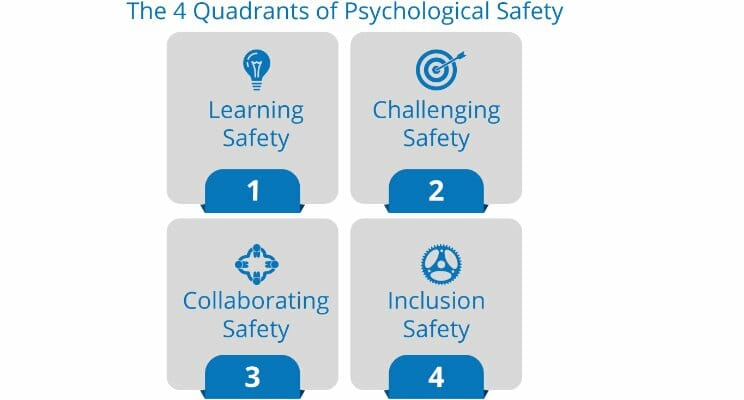The 4 quadrants of psychological safety: Rocket fuel for teams
You may have heard about Google's Aristotle Project. They dedicated two years of careful study to figure out what drives a high-performance team. Make no mistake, this is one of the most important research projects on team performance ever conducted.
After researching more than 180 teams, they found an unmistakable pattern: The single most important characteristic of a high-performance team is psychological safety. Other factors contribute as well, but this factor – the belief that it's safe to take interpersonal risks – is the linchpin variable and nothing less than rocket fuel to propel a team forward to success.
Google's not the only one to land on psychological safety and further build on the pioneering work of Harvard's Amy Edmonson, but the Google study is powerful validation.
Breaking down psychological safety
At BlueEQ, our research team is taking the study of psychological safety to the next level. In our work with teams across industry, function, and geography, we have broken the construct down further to crack the performance code, identifying four separate and yet related quadrants of psychological safety. Each one is based on a different principle and behavioral response.

1. Learning safety
Learning safety means that you feel safe to engage in all aspects of the discovery process, to ask questions, to experiment and try new things, to root around, ask for help, and even learn from mistakes – not if, but when you make them. If you don't have learning safety, it's not worth the risk to venture out, sniff, poke, and crawl around. Learning safety fosters a willingness to learn something new, attack a thorny problem, or look for a new opportunity or breakthrough.
2. Challenging safety
Challenging safety is a little different. You want it when you think something needs to change and it's time to say so. This type of safety is based on permission to challenge the status quo, which grants you immunity from repercussion or reprisal. If you have challenging safety, you speak up because you have a license to disagree. If you don't, you hunker down, smile and speak soothing words that reinforce the status quo.
3. Collaborating safety
The third quadrant of psychological safety is built on mutual access and social engagement. In other words, you can pull your chair up to anyone anytime. You live in a constant and perpetual state of open dialogue and constructive debate based on a permeable membrane between you and the other team members. Giving and receiving feedback is the air you breathe. The tacit assumption is that execution and innovation are primarily social processes, so "co-laboring" as the word denotes, is as a natural as playing or eating together.
4. Inclusion safety
Based on the principle of mutual respect, the final and culminating quadrant of psychological safety is based on inclusion. Inclusion safety is agnostic to a person's title, position, authority, or background. To have inclusion safety is to know that you are valued, listened to, and treated fairly. Delicate and perishable, inclusion safety is created and sustained through consistent, affirming touch points with your colleagues. You will stumble, fall short, and get it wrong, but you are never embarrassed, punished, marginalized, or rejected. Lest you forget, your colleagues will remind you that you are a valuable member of the team.
__________
This article originally appeared on LinkedIn Pulse: The 4 Quadrants of Psychological Safety: Rocket Fuel for Teams
